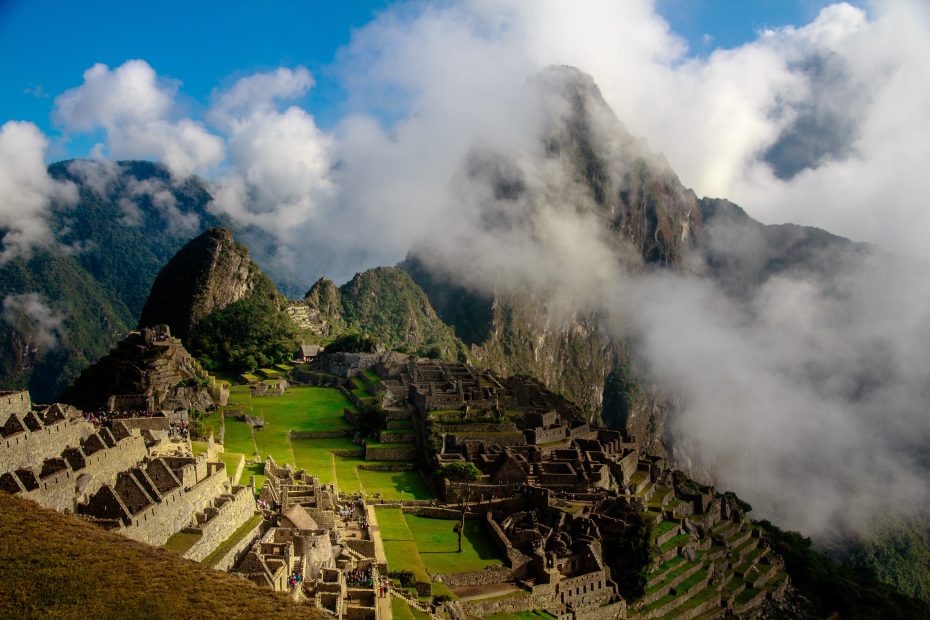Table of Contents
Introduction
Peruvian cuisine has a rich history stretching back to pre-Columbian times. The Indigenous Inca and ancient Andean peoples cultivated crops like corn, potatoes and quinoa, and incorporated them into their flavorful dishes. When Spanish colonizers arrived in the 16th century, their European ingredients like rice, wheat and beef merged with native foods to create unique fusions. Over many generations, immigrants from Asia, Africa and beyond have also added their spices and cooking styles, resulting in one of the most diverse and mouthwatering cuisines in South America. This article explores some highlights of Peruvian food and drink, from tangy ceviches to hearty meat dishes to sweet desserts and beverages. Come along on a delightful gastronomic journey through the many flavors of Peru.
Ceviches and Seafood
No trip to Peru is complete without trying ceviche, the bright citrus-cured seafood dish that is a national specialty. The most common type is fish ceviche, made from white fish marinated in lime or bitter orange juice. Shellfish ceviches feature shrimp, scallops or mixed seafood. A savory sauce called leche de tigre (“tiger’s milk”) made from the ceviche juices is also a key component,used to marinate and tenderize the fish. Other popular seafood includes lightly fried fish like corvina, sautéed shrimp, scallops served with creamy sauces and soups like aguadito made with shellfish broth.
Novoandina Cuisine
In the past few decades, innovative Peruvian chefs like Gaston Acurio have created a new style of cuisine called Novoandina, meaning “new Andean.” This artful blend combines native ingredients with modern cooking techniques. Dishes may include updated versions of traditional foods like quinoa risotto or soups with Andean potatoes and herbs, as well as creative new fare like alpaca burgers or ceviche with Amazonian fruits. Novoandina chefs reach deep into Peru’s culinary heritage while also adding global elements to produce one-of-a-kind flavor combinations. Their restaurants bring fine dining to native foods and ingredients.
Staple Foods
At the heart of Peruvian cuisine are staple foods from the region’s rich agricultural lands. Potatoes originated in Peru and there are over 4,000 colorful varieties. Major types include starchy yellow potatoes, creamy huayro potatoes and bitter papa amarillas. Giant kernel Cusco corn comes in shades of purple, red, black and orange. Quinoa, once called the “mother grain” by the Incas, is actually a nutrient-packed seed that comes in red, white and black varieties. You’ll find these staples incorporated into dishes across Peru.
Meat Dishes
Carnivores will delight in Peru’s flavorful meat dishes. Anticuchos feature beef heart marinated in vinegar and spices, then skewered and grilled over hot coals. For the adventurous, cuy or roasted guinea pig is a prized delicacy in the Andes region. Alpaca (a relative of the llama) is lower in fat than beef and has a tender, slightly gamey taste. These traditional dishes offer a real taste of Peru’s culinary heritage. Rice often accompanies meat entrees.
Rice Dishes
Peruvians have incorporated rice into a number of signature dishes. Arroz con pollo is tender chicken stewed with rice, vegetables and spices. Rich, layered arroz tapado (“covered rice”) combines rice with seafood or meat. Risottos made with native grains like quinoa or kiwicha (amaranth) instead of arborio rice are also popular. The creamy rice complements hearty meats and stews.
Desserts and Beverages
With a sweet tooth, try some of Peru’s delicious desserts and beverages. Picarones are sweet, pumpkin-shaped fritters made from sweet potato and squash dough. For purple corn pudding, mazamorra morada is flavored with cinnamon and cloves. Chicha morada, a non-alcoholic beverage made from purple corn, provides a refreshing sweet-tart drink. Peru’s famous cocktail, the pisco sour, mixes grape brandy pisco with fresh lime juice and egg white for a foam top. The result is the perfect sweet-tart balance.
Conclusion
From the Pacific ocean’s bounty to the Andes’ aromatic spices, Peru offers an unforgettable culinary ride for all tastes and cravings. The next time you want to add some adventure to your palate, bite into an authentic Peruvian meal or beverage. It’s sure to be a mouthwatering journey full of bright flavors, hearty comfort foods and intriguing fusions. So open your mind, appetite and tastebuds to the diverse delights of this exceptional South American cuisine. ¡Buen provecho y buen viaje! (Enjoy your meal and trip!)
FAQs
What are some of Peru’s most popular dishes?
Some Peruvian favorites include ceviche (citrus-cured seafood), anticuchos (beef heart skewers), arroz con pollo (chicken and rice), lomo saltado (stir-fried beef), and suspiro a la limeña (caramel meringue pudding).
What are the main Peruvian staple foods?
The main staples are potatoes (of which there are over 4,000 varieties in Peru), corn, quinoa and other Andean grains, along with native roots and tubers like oca and mashua.
What are some key flavors used in Peruvian cooking?
Popular Peruvian flavors and seasonings include ají chili peppers, lime juice, cilantro, onions and garlic. Spices like cumin and annatto (achiote) are also common.
What drink is Peru famous for?
Peru’s most famous drink is pisco – a grape brandy that forms the basis for cocktails like the pisco sour, made with pisco, lime juice, egg white, syrup and bitters.
What is novoandina cuisine?
Novoandina cuisine combines native Andean ingredients with modern cooking techniques. It was pioneered by Gaston Acurio and other chefs putting a new spin on traditional dishes.
